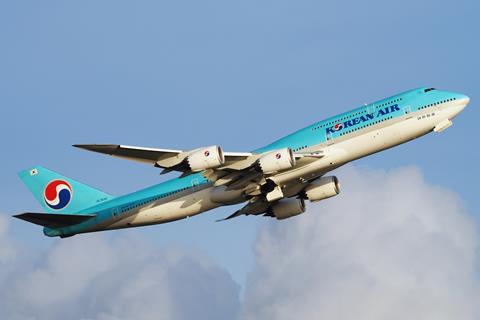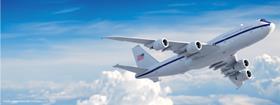US defence contractor Sierra Nevada confirms it reached an agreement to acquire five aircraft from Korean Air, a deal coming as the company works to develop a fleet of US command jets possibly based on Boeing 747s.
The Nevada-based mission systems provider told FlightGlobal on 22 May it “purchased” five jets from the airline but declines to specify the aircraft type.
Korean Air in an 8 May securities filing had already disclosed its intention to sell five aircraft to Sierra Nevada for W918 billion ($675 million) – $135 million per jet – as part of its “mid- to long-term introduction plan for new aircraft”.
The filing says Korean intends to deliver the jets by the end of September 2025 but also does not identify the aircraft type.
Reuters, however, reports that the jets are Boeing 747-8 widebodies, citing an unnamed source. The type represents just a small portion of Korean’s fleet, according to Airline Business, with nine examples in service, out of 160 total aircraft. Cirium data indicates an average age of 8.1 years for the nine jets, five of which are owned by Korean, with the additional four owned by undisclosed parties.

Sierra Nevada declines to reveal the purpose of the acquisition.
However, in April the company secured a substantial $13 billion contract with the US Air Force (USAF) to build a new fleet of nuclear command and control aircraft.
“We are ready and excited for the opportunity to design the mobile command center of the future,” Sierra Nevada chief executive Faith Ozmen said on 22 May, roughly one month after the Pentagon revealed the contract selection.

Known as the Survivable Airborne Operations Center (SAOC), the new platform will replace the air force’s Boeing E-4B Nightwatch jets, which are capable of commanding Washington’s nuclear arsenal from aloft.
Those aircraft entered service in the 1970s and are nearing the end of their service life, the USAF says. The average age of the current fleet of four E-4Bs is 50.1 years.
The E-4B is a derivative of the 747-200 – further suggesting a connection between the SAOC programme and Sierra Nevada’s acquisition plans. Sierra Nevada also released imagery depicting what appears to be a 747-based SAOC jet.
While twinjets like Boeing’s 737 have provided the basis for many new military aircraft, including the P-8 maritime patrol and E-7 airborne early warning and control platforms, the four-engined 747 offers additional redundancy for a small fleet tasked with a high-threat national security mission.
The Pentagon describes the ability to command the nation’s military forces – including its nuclear arsenal – from mobile airborne stations as critical to deterring adversaries from conducting strategic attacks against the USA or Washington’s allies and partners.
In the event of national emergencies or destruction of ground-based command centres, E-4Bs would allow leaders to coordinate actions with civil authorities, direct US forces and execute emergency war orders, including the launch of nuclear weapons.
Boeing had also been competing for the SAOC production deal but withdrew its bid in 2023, citing an impasse with the USAF over contract terms.
Additional reporting by Greg Waldron































